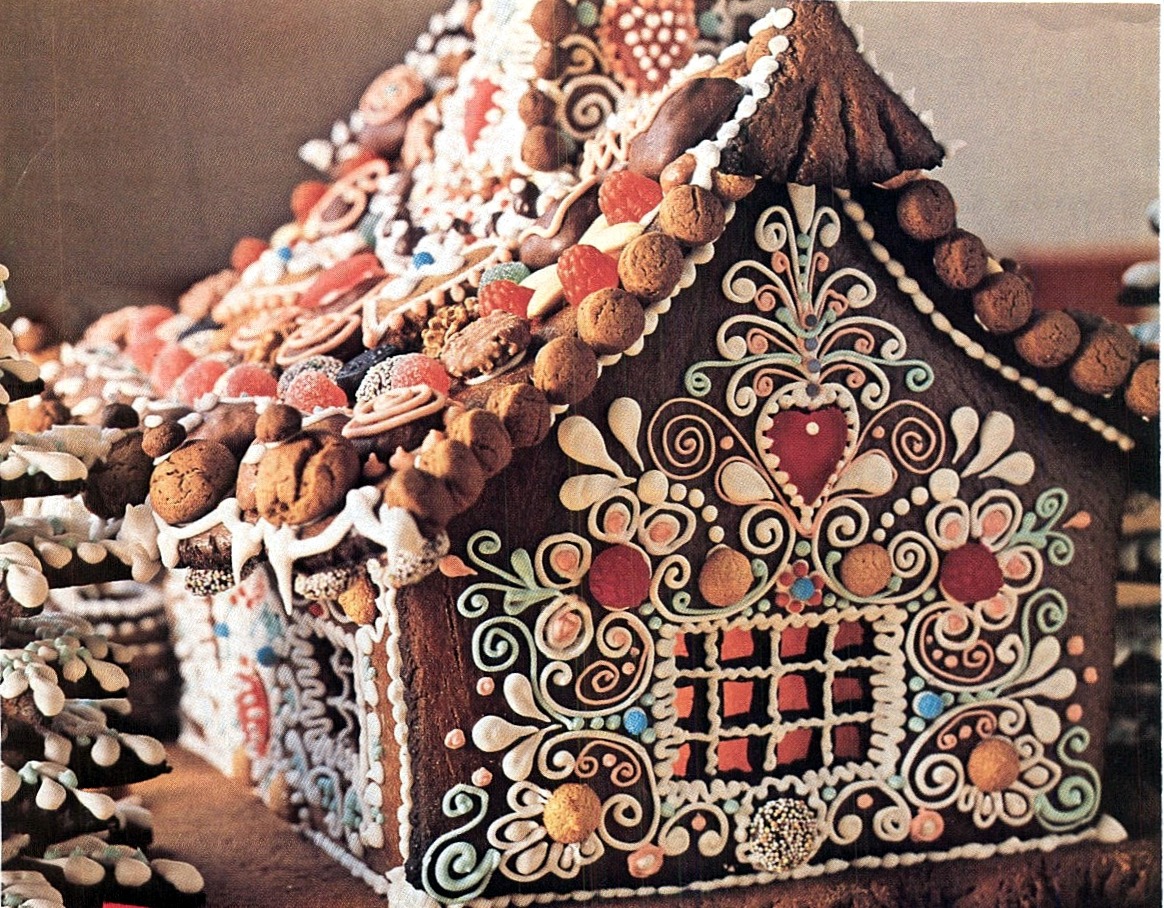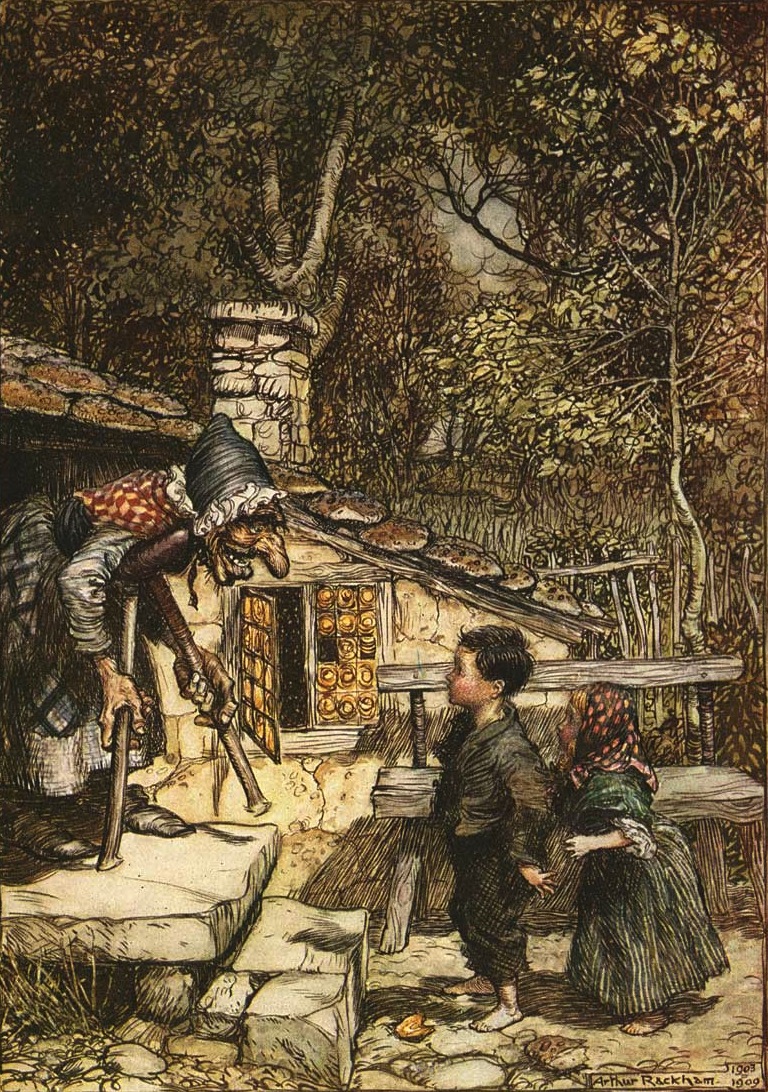A House Full of Ginger (original) (raw)

Gingerbread houses are a well-known Christmas tradition, not that I’ve ever seen anyone actually make one. They’re a pretty cool idea, though. The idea of objects made of foodstuffs is an old one in legends throughout the world, especially when geared toward kids. The gingerbread house is associated with the fairy tale of Hansel and Gretel, in which a cannibalistic witch lives in one. The thing is, nobody seems to be sure whether the tale was describing a larger version of something that was already traditional, or the story inspired people to try gingerbread architecture for real. It’s difficult to find out exactly when gingerbread houses became a thing. Two pages that came up in a quick search give very different estimates, the nineteenth century according to Wikipedia, and the sixteenth according to PBS, although I suspect the latter might be a typo. And it’s always difficult, if not impossible, to tell how a fairy tale originated, although the most famous version is the one first recorded by the Brothers Grimm in 1812. The purpose of the gingerbread house in the tale is to lure children so the witch can eat them.
There’s a general theme of food throughout: Hansel and Gretel are abandoned in the woods because their family can’t afford to eat, the breadcrumbs Hansel scatters to mark the path back home are eaten by birds, and the witch who wants to eat kids ends up cooked to death. The Wikipedia entry on the story cites a supposition that the tale started in the Great Famine of the early thirteenth century, but I don’t know the research behind this. It’s worth noting that, in later editions of the tale, the Grimms changed the children’s mother to a stepmother, presumably to explain why she didn’t have any maternal feelings toward them, a recurring theme in fairy tales. The woodcutter who puts the needs of his wife above those of his kids, even if reluctantly, isn’t all that sympathetic either, though. That the mother/stepmother dies when the witch does suggests a link between them, although they’re presumably not physically the same character, because why stay with a poor woodcutter when you could hang out in your other home that’s literally made of food and filled with gems?
But that’s me being literal about the whole thing. For that matter, the house would presumably be destroyed by the rain and/or become stale and moldy, but what’s the point of being a witch if you can’t manipulate the laws of nature?
I’m reminded of Ugu the Shoemaker‘s wicker castle in The Lost Princess of Oz, about which the Wizard of Oz says, “With magic to protect it, even a paper castle might be as strong as if made of stone.” Gingerbread is also used as a description of latticework popular on houses in the Victorian era.
Gingerbread of some sort might possibly date back millennia, although the recipes probably weren’t typically what we’d recognize as gingerbread. The tradition of making it into shapes is commonly attributed to the court of Queen Elizabeth I, where guests were sometimes served gingerbread people made to look like them. I suppose a gingerbread man could live in a gingerbread house, but would that be like a person living in a house made of flesh?
Gingerbread people also relate to fairy tales, with the story of the gingerbread man who somehow came to life an ran away from people who wanted to eat him, only to be devoured by a sly fox in the end.
This has predecessors in other folk tales about living foodstuffs, like the Slavic Kolobok ones about an escaped fried round bread, and German versions where it’s a pancake that gets away.
The gingerbread man story in particular first appeared in print in 1875, and I suspect the sort-of-human shape made it easier for the runaway to maneuver than it was for the other pastries. L. Frank Baum uses the general theme in John Dough and the Cherub, in which John is a giant gingerbread man accidentally brought to life with a magic elixir, who proceeds to run from people who want to eat him first in the United States, then on various enchanted islands, before finally becoming a king.
Around the same time, there was a stage musical about a gingerbread man also called John Dough, with music by A. Baldwin Sloane, a composer who had also worked on the stage version of The Wizard of Oz. Baum appeared to have some resentment about this, although it’s not clear whether there was any actual imitation, since both were inspired by the earlier fairy tale, and apparently neither one made up the name John Dough for a gingerbread man.
Also worthy of note are Ruth Plumly Thompson’s Johnny Gingerbread from one of her advertising pamphlets, and the serial killer Gingerbreadman in Jasper Fforde’s Nursery Crime series.
This entry was posted in Advertising, Authors, Characters, Christmas, England, Fairy Tales, Food, Germany, History, Holidays, Jasper Fforde, L. Frank Baum, Magic, Nursery Crime, Oz, Oz Authors, Plays, Ruth Plumly Thompson and tagged a. baldwin sloane, architecture, brothers grimm, candy, gingerbread, gingerbread houses, gingerbread men, hansel and gretel, john dough, john dough and the cherub, johnny gingerbread, kolobok, pancakes, queen elizabeth i, the gingerbread man, the little gingerbread man, the wizard of oz, witches. Bookmark the permalink.